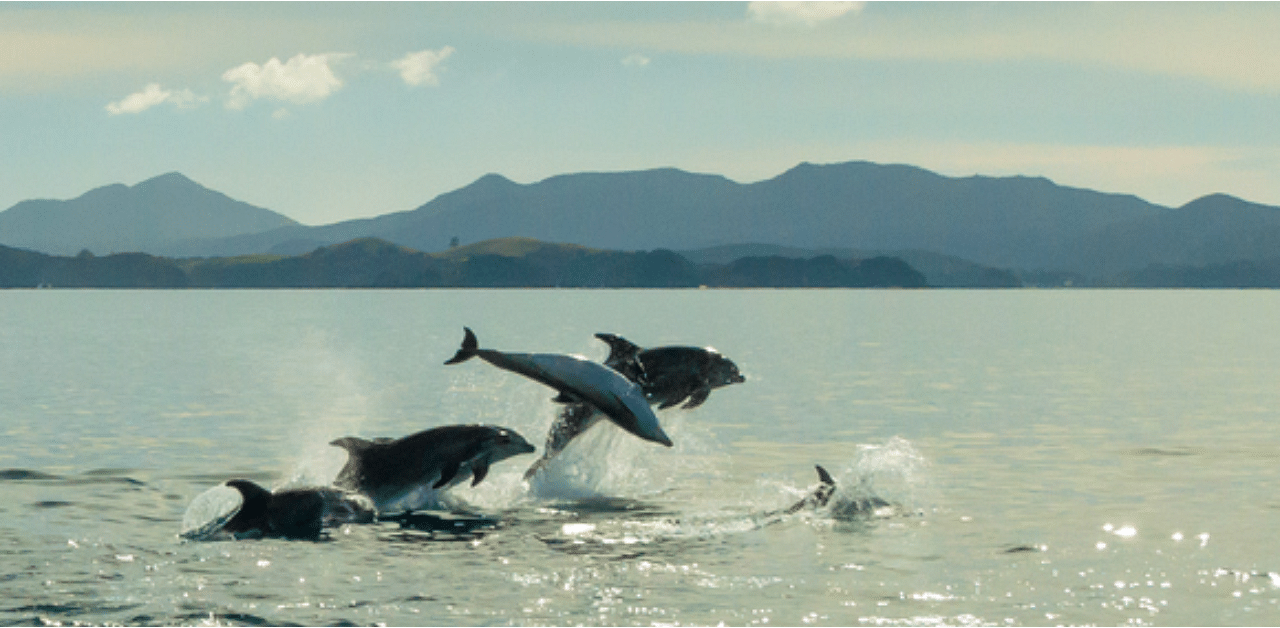
Experts from India, Bangladesh, Nepal and Myanmar on Tuesday discussed ways to conserve river dolphins, the National Mission for Clean Ganga said.
A webinar on 'Exploring the impact of Covid-19 on the ecosystem health of rivers and its dolphin population: Present status and future strategy for conservation in India-Bangladesh-Myanmar-Nepal' was organised.
National Mission for Clean Ganga (NMCG) Director General Rajiv Ranjan Mishra, shared his experiences on dolphin conservation linking its importance in the rejuvenation of the Ganga.
It was conducted by the NMCG, Inland Fisheries Society of India, Indian Council for Agricultural Research-Central Inland Fisheries Research Institute (ICAR-CIFRI), Professional Fisheries Graduates Forum (PFGF) and the Aquatic Ecosystem Health and Management Society.
Historically, the Gangetic dolphin was distributed throughout the Ganga, Brahmaputra and Karnaphuli-Sangu rivers and their tributaries in India, Nepal and Bangladesh, he said.
In India, the Gangetic dolphin is found downstream of Bijnore barrage and tributaries like the Ramganga, Yamuna, Gomti, Ghaghara, Rapti, Son, Gandak, Kosi; and in Brahmaputra river.
The most important thing to focus on now is community participation along with scientific interventions, he stressed.
"Namami Gange has given importance to biodiversity and ecological improvement along with pollution abatement and projects have been taken up for the improvement of fisheries with CIFRI and for biodiversity conservation with Wildlife Institute of India (WII).
"Under this framework, this is a first of its kind occasion where the fishery sector is leading the dolphin conservation discourse," he said.
This webinar was organised to discuss the future strategy to conserve and revive these dolphins with regional cooperation, the statement said.
For the conservation of dolphins, Prime Minister Narendra Modi recently announced 'Project Dolphin'.
The webinar was attended by more than 1,000 participants across the world, according to the statement.
Lectures on 'Conservative measure of Irrawaddy Dolphin in Myanmar', 'Status of dolphins in Nepalese River' and 'National Atlas and dolphin action plan- Bangladesh' were the highlights of the conference.
"The conference resolved to continue this regional and multi-sectoral collaboration. The rich discussion would be very helpful in developing contours of the 'Project Dolphin' in India," the statement added.
In his address, ICAR-CIFRI Director B K Das stated that the discussion would enhance dolphin conservation in the southeast Asian regional countries.
ICAR DDG (Fisheries Science) J K Jena emphasised that with less disturbance and interference, dolphins could thrive on their own and that is what is being seen during the lockdown.
"These animals do not realise boundaries and have tried to find habitat wherever possible. Hence, regional cooperation is very important in conserving them," he said.
River dolphins, a unique species found mainly in rivers of Asia and South America, are vanishing rapidly.
Gangetic dolphin, the national aquatic animal of India, has been declared endangered by the International Union for the Conservation of Nature (IUCN).
The Sundarbans delta is a unique ecological space where the Gangetic, as well as the Irrawaddy dolphin, are present, the statement said.
The conference gave a unique opportunity to share experience on the Dolphins. It was also supplemented by Myanmar and Chilika Lake authority in the context of the Irrawaddy Dolphin, it added.